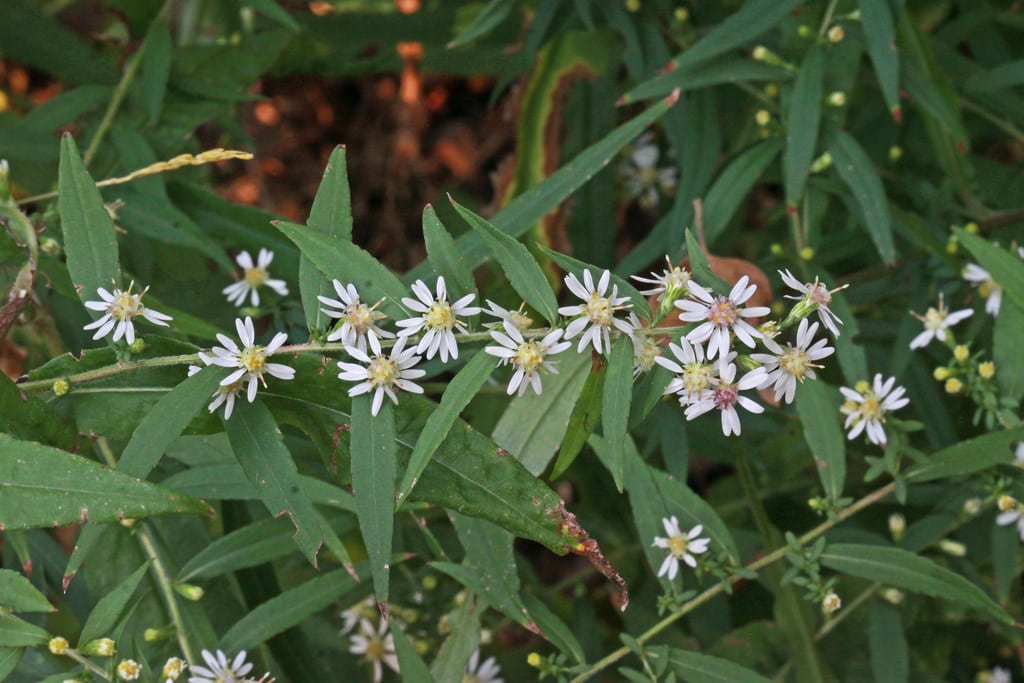Calico Aster Care – How To Grow Calico Asters In The Garden


Each year, more and more people make the choice to plant native wildflowers as a means to attract and maintain healthy numbers of pollinators within their gardens. With the recent decline in numbers of bees and other beneficial insects, planting nectar-rich flowers is one way to ensure a brighter future for these species. One such pollinator plant, calico aster, is an ideal candidate for attracting bees to your flower garden.
Calico Aster Plant Info
Calico aster (Symphyotrichum lateriflorum) is a perennial wildflower which is native to the eastern United States. Most often occuring in USDA zones 4 through 8, this member of the aster family rewards growers with a profusion of blooms in late summer and into early fall. Although individual calico aster flowers are no larger than half an inch (1.5 cm.), large, white clusters of the flowers bloom up and down the length of each stem, making this plant a beautiful addition to ornamental flower borders. Often reaching heights of 4 feet (1 m.) tall, well-established plants require little to no care or maintenance.
How to Grow Calico Asters
Also known as woodland aster, these plants prefer a well-draining location which offers partial shade during the hottest parts of the day. Natural growing calico aster plants are often found near roadsides, in low-lying areas, and near the edges of forests. When choosing a final planting location, consideration should be taken in regards to soil moisture. Ideally, these perennials should be planted where soils remain relatively moist. However, be sure to avoid excessively soggy soil, as this could lead to root rot. While these plants can be purchased and transplanted into their final locations, finding locally available plants may be difficult. Luckily, calico aster plants are easily started from seed. There are several options when choosing to start this plant from seed. It can be started indoors in seed trays as well as directly sown in the garden. Sow the seeds into flats and place in a warm location. When seeds have germinated, harden them off, and transplant into their final location after all chance of frost has passed. Since the seed does not require any special treatment to germinate, growers also have the option of direct sowing into the landscape after all chance of frost passed. Regardless of which germination method chosen, ensure that the perennials are situated in a nutrient-rich area, as plants can be heavy feeders. Some perennial flowers, when started from seed, require time to become established. Newly transplanted seedlings may not flower the first year after planting. Once established, and provided its current growing conditions are suitable, little calico aster care is needed.
Gardening tips, videos, info and more delivered right to your inbox!
Sign up for the Gardening Know How newsletter today and receive a free copy of our e-book "How to Grow Delicious Tomatoes".

Tonya Barnett has been gardening for 13 years. Flowers are her passion. She has transformed her backyard into a cut flower garden, which she regularly chronicles on her YouTube channel http://www.youtube.com/@tonyawiththeflowers.
-
 Get Ready For A Summer Of Hummers! Grow These Full Sun Hummingbird Plants and Flowers
Get Ready For A Summer Of Hummers! Grow These Full Sun Hummingbird Plants and FlowersIf you’re lucky enough to enjoy a sunny backyard, make sure you are maxing out on your pollinator opportunities and grow these full sun hummingbird plants and flowers
By Tonya Barnett
-
 12 Lush Alternatives To A Lawn For Sustainable Spaces
12 Lush Alternatives To A Lawn For Sustainable SpacesAlternatives to a lawn are beautiful and also beneficial to your local ecosystem and its pollinators. Explore our top picks for plants to replace grass.
By Tonya Barnett